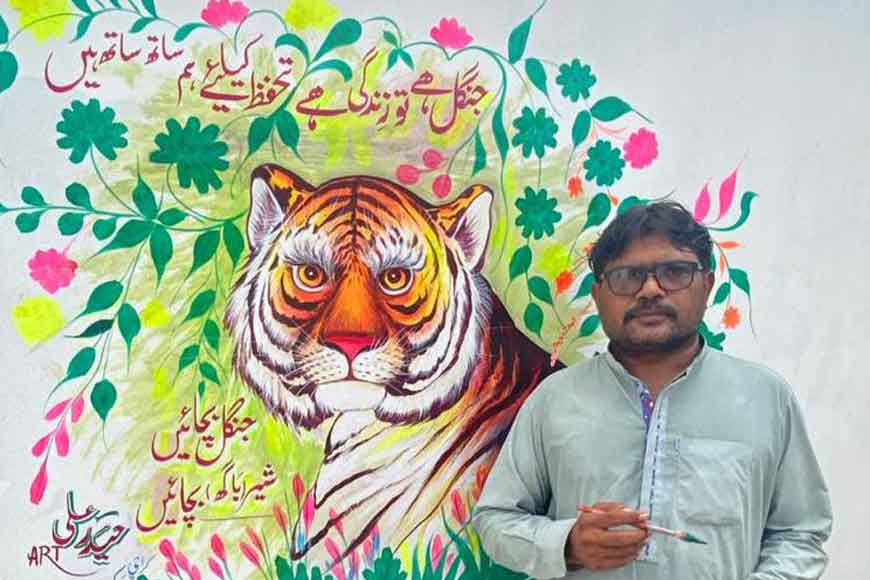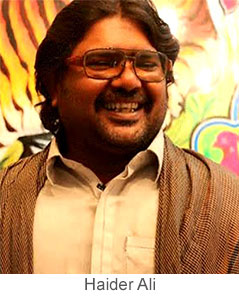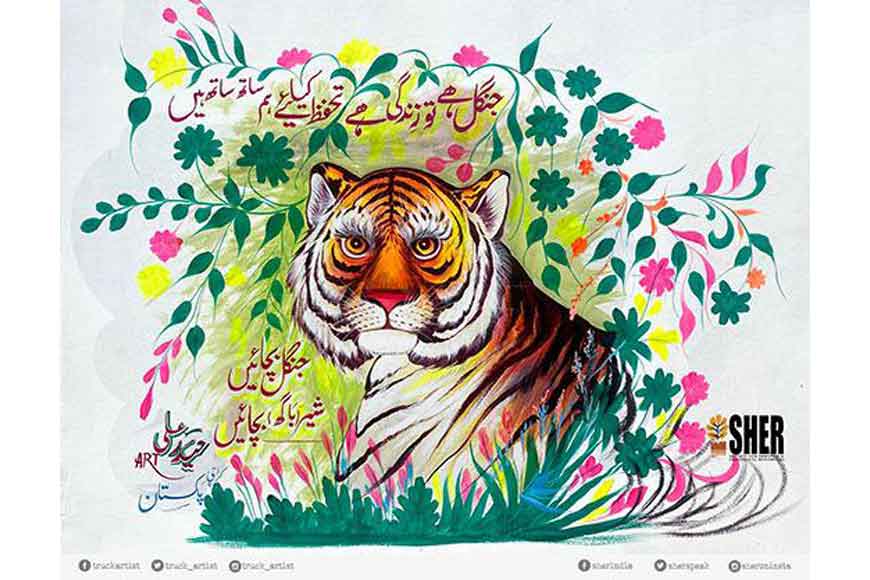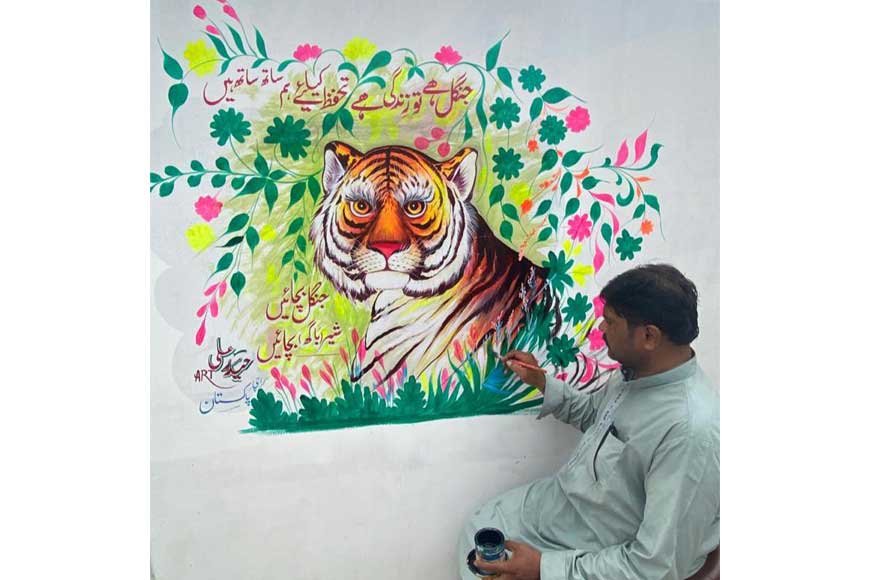‘Truck Art’ to be used to ‘Save Tigers’ of Sundarbans: Famous Pakistani Truck Artist joins

“There is nothing like the thrill of walking through the jungle looking for a tiger and knowing they could be watching you already.” -- Ashlan Gorse Cousteau (American explorer, adventurist and journalist)
Tiger conservationist Joydip Kundu would know what Ashlan wished to convey. Kundu and his wife Suchandra are dedicated conservationists and lifelong members of Kolkata's Society for Heritage and Ecological Research. Joydip Kundu has been studying Royal Bengal Tigers in the Sundarbans region for decades. The couple has been fighting all odds to save the state’s rich wildlife biodiversity and has been organizing innovative awareness campaigns to promote tiger conservation in the country.
The Kundu couple unfurled a unique initiative. They zeroed in on popular ‘Truck Art’ as a medium to spread awareness on the importance of Tiger Conservation. Trucks in India are a psychedelic display of interesting slogans, colors, decorative articles, and countless convoluted symbols. They serve as a three-dimensional canvas. Truck designs are an amalgamation of the influences of different religious beliefs and cultures. We usually see a mix of color schemes, fonts, and symbols on display on Trucks that attract attention easily.
 The Kundus have gone a step further and roped in Haider Ali — a renowned Pakistani Truck Artist. Haider has already created one such art on the wall of his residence in Pakistan and he sent a replica of the art to Joydip for recreating on trucks in India. “I plan to get more than 100 trucks painted in Kolkata with messages pertaining to tiger conservation which will travel across the country, spreading the message,” says Kundu. Artist Haider Ali has created two slogans in Urdu as part of the initiative. They read as —
The Kundus have gone a step further and roped in Haider Ali — a renowned Pakistani Truck Artist. Haider has already created one such art on the wall of his residence in Pakistan and he sent a replica of the art to Joydip for recreating on trucks in India. “I plan to get more than 100 trucks painted in Kolkata with messages pertaining to tiger conservation which will travel across the country, spreading the message,” says Kundu. Artist Haider Ali has created two slogans in Urdu as part of the initiative. They read as —
‘Jungle hai, sher hai to zindagi hai’ (Till there are tigers and forests, we will survive) and ‘Mehfoozi ke liye hum sath sath hai’ (We are together when it comes to conservation).

The Royal Bengal Tiger (Panthera tigris) of the Sundarbans, world's largest mangrove forest, plays a vital role in the balancing of the ecosystem. It is a top predator which is at the apex of the food chain and keeps the population of wild ungulates in check, thereby maintaining the balance between prey herbivores and the vegetation upon which they feed. Local inhabitants of the Sundarbans draw sustenance from natural resources around them. But the fear of the ‘Dakshin Roy’ (the Royal Bengal Tiger is a revered deity in the Sundarbans and Bangladesh who rules over beasts and demons. He is regarded as the overall ruler of the Sundarbans) deters people from entering the forests to fell trees and hunt its wildlife indiscriminately.
Conflict between tigers and humans in the Sundarbans is not new and the strife between man and tiger escalated the moment land reclamation started for new settlements and agriculture. The tiger in the Sundarbans is an inseparable part of the local psyche. It is feared, especially by those who venture into the forest to fish or collect honey. Every year, official figures state that at least 10-20 people who enter the forest are killed by the tiger.
In 2015, Suchandra and Joydip Kundu, Kolkata representatives of Sanctuary Asia, organised a massive ‘Save Our Tigers’ event in the Sundarban Tiger and Biosphere Reserve. More than 1,500 villagers from Pakhiralay attended. Here a tiger was once hacked to pieces in anger. Working with the West Bengal Forest Department, the couple seeks ways to benefit locals directly from tiger conservation. Programmes are organized to sensitize the school children in Sundarbans about tiger conservation with the aim that they will cascade the experiences to their elders through the ambitious ‘Save the Tiger’ project.

Trucks are the lifeline of India. They travel across the country and often cross international borders. So, if a few trucks are used to spread the message, it is going to be a very effective way of communication, believes Joydip. Besides, truck art is one of the most popular ways to reach out to common people and Kundu wants to use the art form to reach the grassroots levels of the country. Since trucks mostly ply on highways and often crisscross forests, locals – both rural and urban people -- will chance upon the artwork along with the slogans. This will sensitize them and they will realize the importance of conservation.











